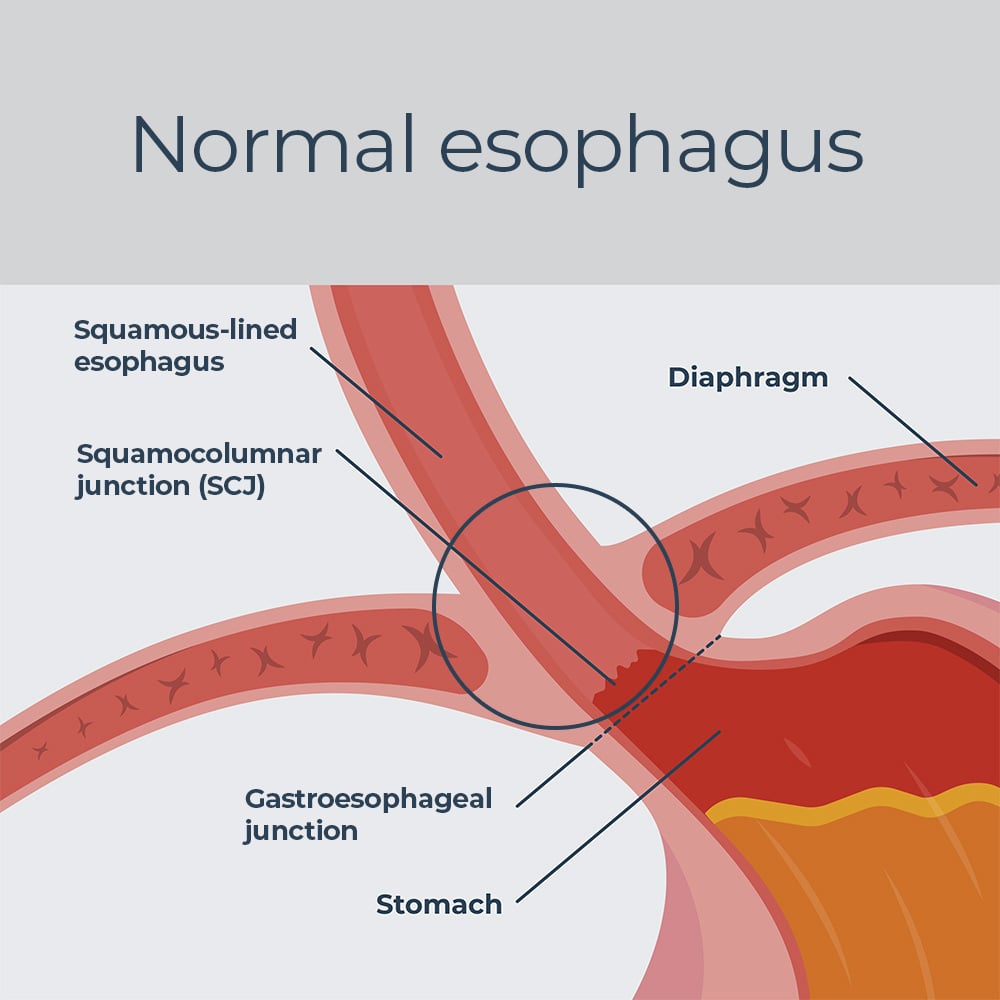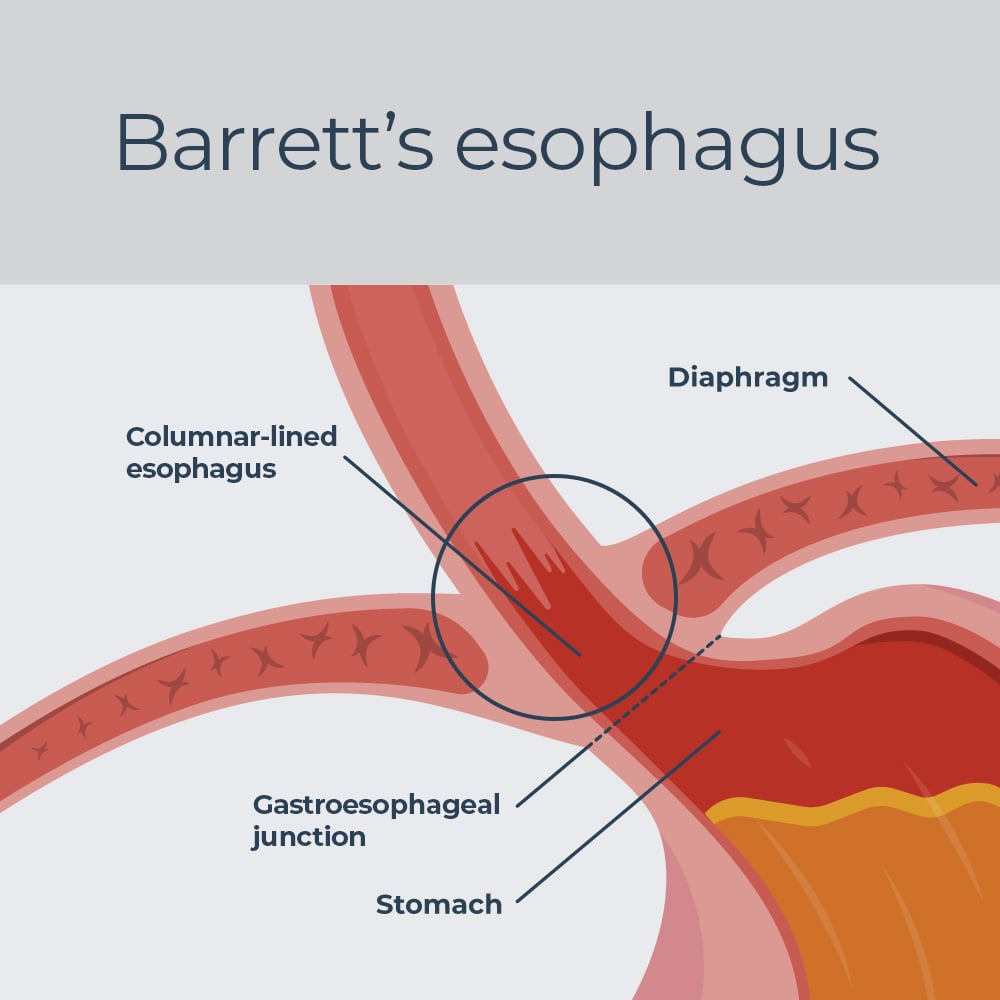
Have you been diagnosed with Barrett’s esophagus?
If you’ve been diagnosed with Barrett’s esophagus (BE), it means that your doctor has found some tissue in your esophagus that is similar to tissue found in the stomach and intestines. This happens when the body is trying to protect the esophagus from chronic acid reflux that damages the normal tissue.
But here’s the problem: any time one tissue starts to replace another tissue, there is a chance that the new growth can become uncontrolled and lead to cancer.

Have you been diagnosed with Barrett’s esophagus?
Barrett's esophagus is a condition in which healthy cells in the esophagus turn into unhealthy cells. The esophagus is the tube that carries food from the mouth to the stomach. When acid from the stomach comes up into the esophagus (called gastroesophageal reflux disease, or GERD), it can damage the cells that line the esophagus.
Jump to a topic
In some people Barrett's esophagus can become more serious and develop into cancer. While very serious, esophageal cancer can be prevented if the unhealthy cells found in high-risk Barrett's esophagus patients are treated before they turn into cancer.


TissueCypher is the first prognostic test for patients with Barrett's esophagus that predicts a personal risk for progressing toward esophageal cancer. It is intended for people who have received a pathology-confirmed diagnosis of non-dysplastic Barrett's esophagus (NDBE), indefinite for dysplasia (IND), or low-grade dysplasia (LGD).
Ask your healthcare professional
if TissueCypher testing is an option for you.
References
1 Hayeck TJ, Kong CY, Spechler SJ et al. The prevalence of Barrett’s esophagus in the US: estimates from a simulation model confirmed by SEER data. Dis Esophagus
. 2010 Aug;23(6):451-7. doi: 10.1111/j.1442-2050.2010.01054.x.
2 Shaheen NJ, Crosby MA, Bozymski EM, et al. Is there publication bias in the reporting of cancer risk in Barrett’s esophagus? Gastroenterol. 2000; 119:333–8.